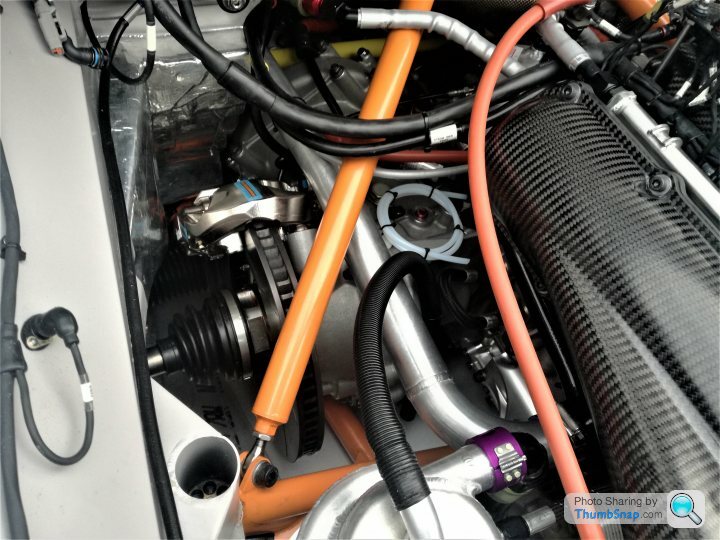Prodrive Megane R.S. RX revealed
If you think it looks mad outside, wait until you hear about what's underneath...

You may remember that the Prodrive-built Megane R.S. RX was previewed last year, but here it is in full race spec, ready to go for the 2018 WRX season. The headline number is 600hp (there or thereabouts) from a 2.0-litre four-cylinder turbo, with power reaching all four wheels via an Xtrac five-speed sequential. However, there's way more to this Megane than just power...

That's not all. Prodrive has collaborated with Ohlins for the Megane's suspension, a bespoke four-way adjustable damper the result. Double wishbones at each corner further reduce unsprung mass. Both front and rear diffs come from Xtrac, and the carbon plate clutch is from Alcon. A serious spec for a very serious looking car.

The Megane R.S. RX will be driven by Guerlain Chicherit this year, who said he "can't help but be excited!" about the prospect. It's easy to see why. Should be one heck of a season. Will the new Megane give Chicherit an advantage? Not long before we find out, as the first race is next weekend...
Is this the main reason why they are not used on supercars - imaging the twisting forces on the shaft when braking a 1.5 ton car from 150mph+?! Then imagine doing that on a track day for 20 laps or so.
Brakes and tyres are the two areas that seem to be under developed compared to engines and suspension development in the last 20-30 years. Although I'm sure the construction and compounds used in tyres are advances, we still rely on small rubber contact patches to keep us on our poorly surfaced and potholed roads.
Still, I love older cars so more an observation than a moan.
ETA: @DanG355 I suspect they're mostly not used in road cars because the packaging compromise is not worth the small performance improvement, particularly when taking into consideration the need to keep them cool.
It's a great way to reduced unsprung weight if you can find a way to keep the brakes cool.
As to the car itself, great. Glad it exists so that we can enjoy chatting about it on this 'website'.
I thinks it cool... And hope they are cool, wondering in such case, how...
As for twisting force, tyres have limited grip and given that 600bhp will break traction at almost any time, the driveshafts will take the braking no problemo...
It'd be interesting to see the under bonnet package to get the engine, trans, diff and brakes in?
It'd be interesting to see the under bonnet package to get the engine, trans, diff and brakes in?
There is of course more than one way to skin a cat...

You take the penalty of running the engine well forwards in the engine bay? Is this because the start is all important? (get ahead off the lights and the race is yours too loose) A front weight bias gives you a good launch because you can use the front tyres more? ie you are biasing towards "Traction" from "Handling")
(The WRC Subaru's were always hampered by the fwds / high engine compared to the other cars that pretty much could bury the engine under the bulkhead....)
Way back in the day, a certain pretty successful RallyCrosser got very creative and "split" the front diff in two, and placed each half (2 crownwheels and pinions) on each side of the longitudinal engine block, placing the actual "diff" in the gearbox, and feeding a shaft forwards down each side of the engine. In that way the engine could be back and low, without having to get the drive to the front wheels "though" the crank.......
Gassing Station | General Gassing | Top of Page | What's New | My Stuff





